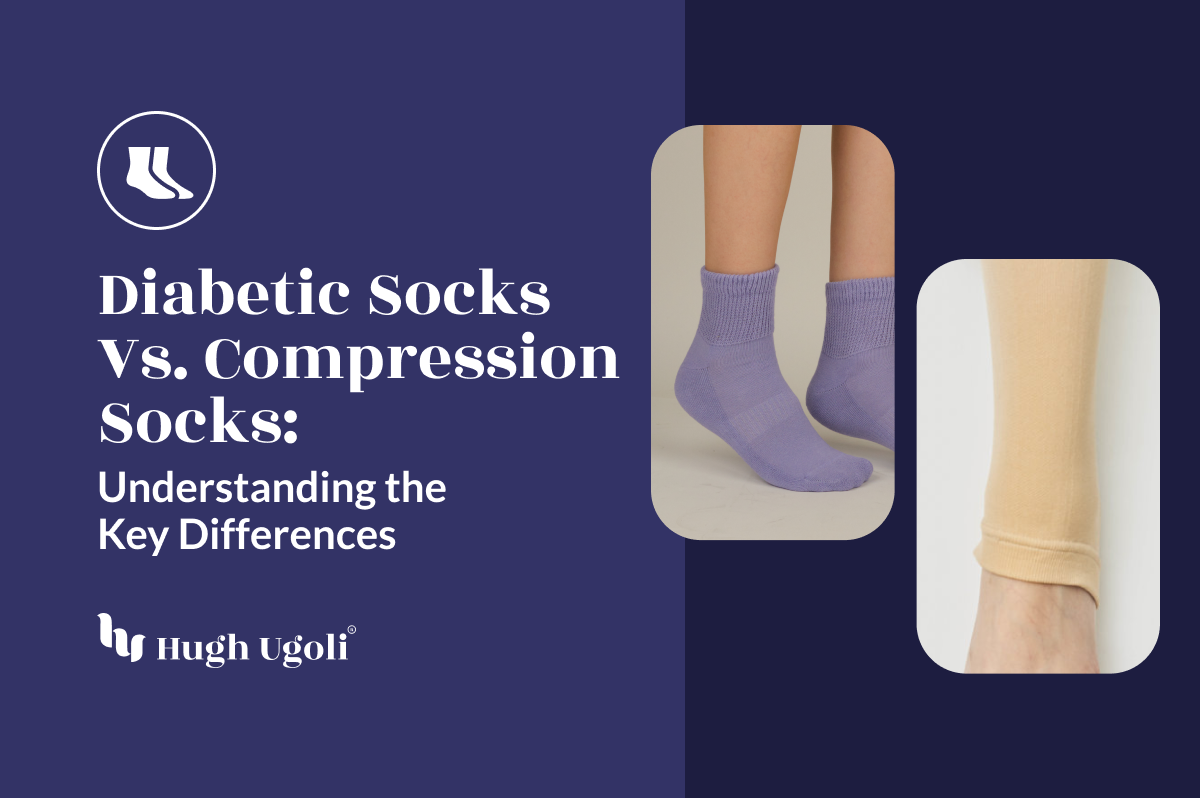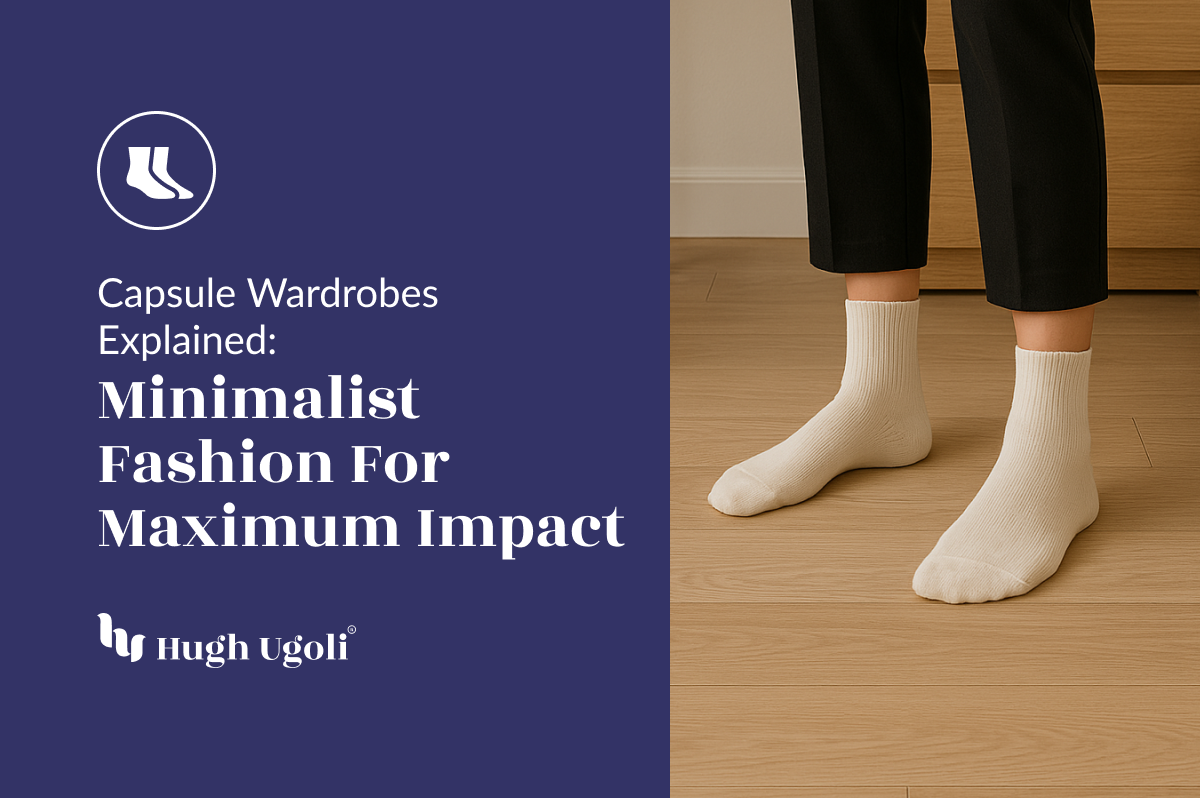When managing diabetes, proper foot care is essential. Two types of socks often recommended are diabetic socks and compression socks. While both serve specific purposes, understanding their differences can help you make an informed choice. This guide will delve into these differences, highlight their benefits, and help you decide which is best for your needs.
The Purpose of Diabetic Socks
Diabetic socks are designed to keep feet dry, reduce the risk of injury, and enhance foot health. They are typically made from moisture-wicking materials that help keep feet dry, which is crucial for preventing fungal infections and other complications.
Benefits of Diabetic Socks
- Moisture Wicking: Helps keep feet dry, reducing the risk of infections.
- Seamless Design: Minimizes friction and prevents blisters.
- Cushioning: Provides extra comfort and protection.
The Purpose of Compression Socks
Compression socks are designed to improve blood circulation in the legs. They are often recommended for people with conditions like deep vein thrombosis (DVT), varicose veins, or those who stand for long periods.
Benefits of Compression Socks
- Improves Blood Flow: Helps prevent blood clots and reduces swelling.
- Reduces Risk of DVT: Beneficial for those with a history of blood clots.
- Supports Varicose Veins: Alleviates symptoms and prevents further vein damage.

Key Differences
-
Purpose:
- Diabetic Socks: Focus on foot health and preventing injuries.
- Compression Socks: Aim to improve blood circulation and prevent blood clots.
-
Material:
- Diabetic Socks: Made from moisture-wicking materials.
- Compression Socks: Typically made from elastic materials to provide compression.
-
Design:
- Diabetic Socks: Often have seamless designs to prevent blisters.
- Compression Socks: Provide graduated compression to improve blood flow.
When to Use Diabetic Socks
- For Diabetes Management: If you have diabetes, these socks help in reducing the risk of foot injuries and infections.
- Daily Use: Suitable for everyday wear to keep feet healthy and comfortable.
When to Use Compression Socks
- For Medical Conditions: If you have conditions like DVT or varicose veins.
- For Long Periods of Inactivity: Ideal for long flights or sitting for extended periods to improve circulation.
Combining Diabetic and Compression Socks
Some products combine the features of both diabetic and compression socks, providing the benefits of moisture-wicking properties and improved blood flow.
Compression Socks for Everyday Use
Compression socks are not just for those with medical conditions. They can be beneficial for anyone who spends long hours on their feet or sits for extended periods. These socks improve blood circulation, reduce swelling, and prevent varicose veins, making them an excellent choice for office workers, travelers, and athletes.
Diabetic Socks: Essential Features
When choosing diabetic socks, look for features such as non-binding tops, extra cushioning, and seamless designs. These elements help reduce the risk of blisters, improve comfort, and enhance overall foot health, which is crucial for people with diabetes.
How to Care for Your Diabetic and Compression Socks
Proper care of your diabetic and compression socks ensures they remain effective and durable. Always follow the manufacturer’s washing instructions, avoid using high heat, and consider air drying to maintain the elasticity and integrity of the socks.
Frequently Asked Questions about Diabetic and Compression Socks
- Can I wear compression socks if I have diabetes? Yes, many diabetic individuals benefit from wearing compression socks to improve blood circulation and reduce swelling.
- How often should I replace my diabetic socks? Regularly inspect your socks for wear and replace them every 6 months to a year, depending on usage.
- What are the signs that I need new socks? Look for signs of wear such as thinning fabric, loss of elasticity, or holes. If the socks no longer provide the same level of comfort or support, it’s time to get a new pair.
User Reviews and Experiences
Many users have found significant relief and comfort by switching to diabetic and compression socks. Testimonials often highlight the reduction in swelling, improved foot health, and enhanced comfort during daily activities. Reading customer reviews can provide valuable insights and help you choose the right pair for your needs.
Recommended Products
- Unisex Cotton Diabetic Crew Socks: Provides moisture-wicking and comfort for everyday use.
- Men’s Cotton Diabetic Ankle Thin Socks: Ideal for those who need both diabetic care and mild compression.
Conclusion
Choosing between diabetic and compression socks depends on your specific needs. Understanding their differences and benefits will help you make the best choice for your foot health. For more insights on foot care, check out our blog on How to Choose the Right Diabetic Socks for Diabetic Foot Care.
















